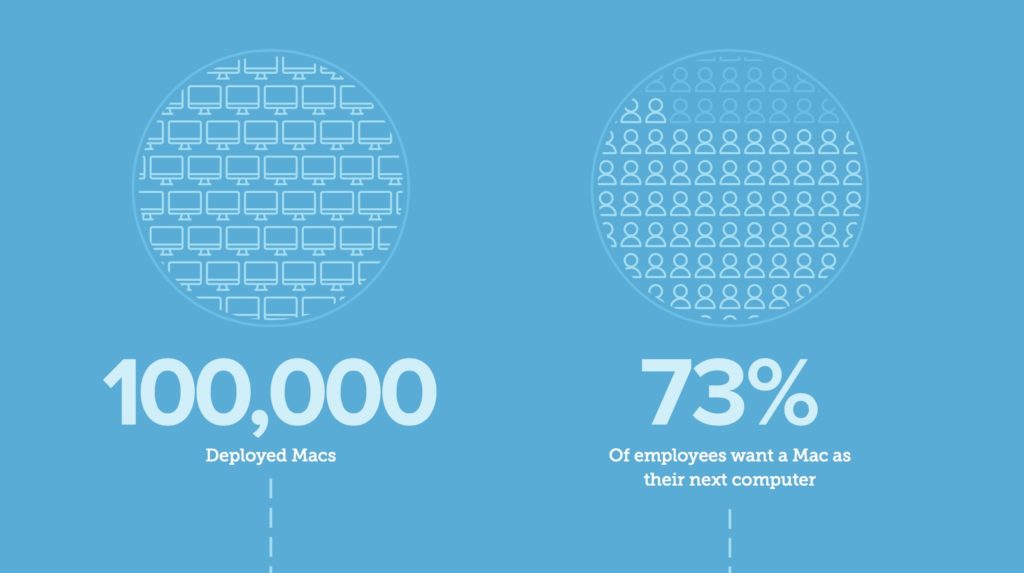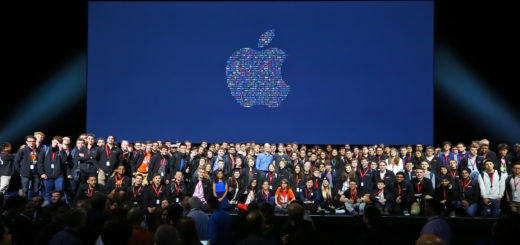IBM Saving Up to $50m by Switching to Mac

IBM is becoming the world’s biggest Mac enterprise, with almost 100,000 Macs now deployed across the company, according to Jamf’s Annual Apple Trends Survey.
Big Numbers
This is only the beginning — IBM claims 73 percent of its employees would choose a Mac instead of a Windows PC if they get the chance to choose. There are 400,000 employees at IBM, so if almost three quarters of them move to Mac that will be 300,000 happy upgrades to macOS from Windows.
IBM is thrilled, I guess. It should be. Every one of its employees who chooses to use a Mac is saving the company money. Sure, the up-front cost is higher, but support costs are minimal, on-boarding is easy and integration is simple, thanks to Jamf.
Big Savings
In October 2016, IBM said it saves up to $543 per user per Mac in contrast to the cost of running Windows PCs. This means that with 100k Macs across the company, it already stands to save up to $50 million. If it does end up giving Macs to all its employees who might want them it will save even more money. The company also has around 200,000 iOS devices in use by its employees.
It’s not all about the money.
Speaking at the Jamf conference in 2016, Fletcher Previn, vice president of workplace-as-a-service at IBM, pointed his guns firmly at digital transformation of the company:
“The goal is to delivery an employee choice program and to at least aspire to have the greatest Mac program in the world … We think the Mac is a great vehicle for reinforcing the culture changes we want to have within IBM.”
Big Change
The cultural changes within enterprises favour agile development, data-driven collaboration and fast identification and response to market change. To achieve this, companies like IBM are working hard to create more autonomous and less hierarchical structures that favour collaboration and flexibility. IBM reports a 91 percent user satisfaction rating across its Mac using workforce.
The great appeal to Apple’s kit is that it can be used effectively by anyone at all – you don’t need to study it, but its Unix-base means you can deck the system out almost any way you want – just look at some of these tips to figure out how.
Big Future
On a more serious note, we still haven’t seen anything like how we can imagine Apple and IBM may work together to create AI solutions for these products, and that’s where the digital transformation of the enterprise will really take place.





Unfortunately, IBM is only one out of a hundred companies supporting Apple products in the enterprise. 99 of those companies are diehard Microsoft PC users who will never change and Microsoft is willing to do anything to hold on to those customers. That’s how Wall Street sees it so that’s the way it likely is. Businesses are more interested in initial cost than anything else and those Windows PCs always win the contracts because they bid at such a low price. Apple products seem to be getting more and more expensive for buyers. Apple’s economies of scale only works for Apple and not for customers.
I think the only thing that could wrest the grip of Windows away is those dirt-cheap Chromebook devices. Just like the Chromebooks are undercutting the crap out of Apple in schools it’s likely going to be the same way in the enterprise. Cheap, cheaper, cheapest is the strongest battle-cry in winning the war for computer sales.
This is one of the most intelligent posts I have ever read. I completely agree with your sentiment of how consumers think and how Apple’s cost structure really does only benefits them and not consumers. If they were to smarten up, they would come up with a better range of products that are strong but would actually compete with Microsoft. I am saving up for an Apple. With the number of laptops I have bought over a short period of time, I could have gotten an Apple laptop that would have lasted me that long. It is just the initial costs is something I cannot handle and I refuse to borrow.